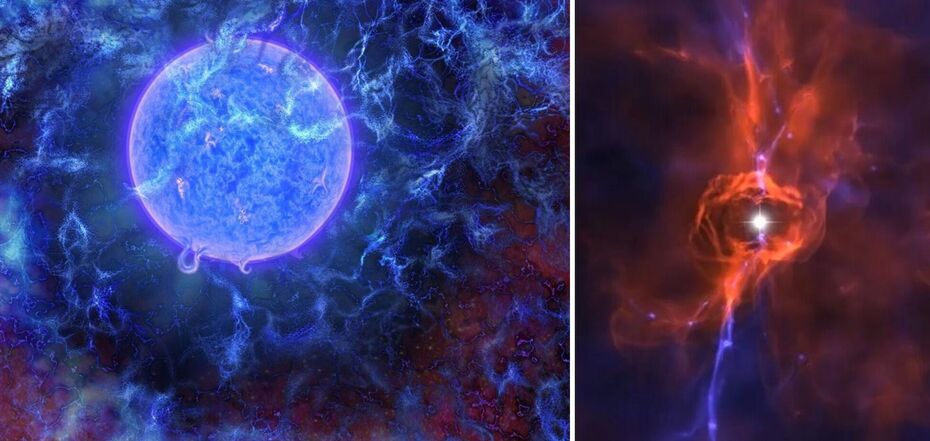Life
Astronomers managed to see debris of the very first stars in the universe
Astronomers have been able to look at the remnants of stars that formed in the first moments of the universe after the Big Bang. Some of these stars were thousands of times larger than our Sun.
Astronomers from the European Southern Observatory (ESO) told about the observation of these ancient and no longer existing stars in a study published in the scientific journal The Astrophysical Journal. Big Think tells the details.
After the Big Bang, the universe contained only two elements: hydrogen (92%) and helium (8%). There were still tiny traces of other elements, but everything else only formed over time.
Because the derivatives were just that, the first stars in the universe were extremely massive. Some of them reached the size of 10 of our Suns, while others were hundreds or thousands of times larger. In addition, their lives, by the standards of the universe, were short: the dawn completely spent its fuel in just a few million years. For comparison, our Sun has been blazing for 4.6 billion years and is estimated to shine as long.
When the dawn was depleted, however, a cataclysmic event called a supernova happened to it. This is a powerful explosion that occurs because the star collapses into itself. Such an explosion causes the contents of the star to be ejected into interstellar space, mixing with the original hydrogen and helium.
But because early star explosions were not as powerful as the supernovae we see now, the iron formed in the core of the star was not ejected into outer space.
Given this data, astronomers knew they needed to look for clouds of gas in the early Universe that consisted mostly of hydrogen and helium, but also contained other lighter elements. Such clouds should also contain very little iron. So, if we find just such clouds, we can definitely say that they are the remains of an ancient star.
In order to photograph these clouds, astronomers used ESO's VLT (aka Very Large Telescope). Such a telescope is used to observe emerging quasars, which occur when a supermassive black hole absorbs large amounts of gas and stellar material. In the process, the materials are heated, emitting lots of light. Therefore, in fact, quasars have served as searchlights directed toward Earth for researchers. The quasars chosen for study existed when the age of the Universe was 10% to 15% of the modern age.
As the light from the quasars moved toward Earth, it passed through the gas clouds, which were the whole of the astronomers. They studied how light was absorbed by these clouds, which allowed them to establish their composition. This is possible because different chemical elements absorb different combinations of wavelengths of light and are relatively easy to identify.
As the researchers had hoped, the gas clouds contained hydrogen, helium and several lighter elements (carbon, oxygen, magnesium and silicon). There was also a noticeable lack of iron in the clouds. Thus, scientists are convinced that they have discovered the debris of the very first stars to emerge after the Big Bang.
Earlier OBOZREVATEL also told that astronomers observed a powerful and impressive object, which they called "Scary Barbie".
Subscribe to the channels of OBOZREVATEL in Telegram and Viber to keep up with the latest events.



























